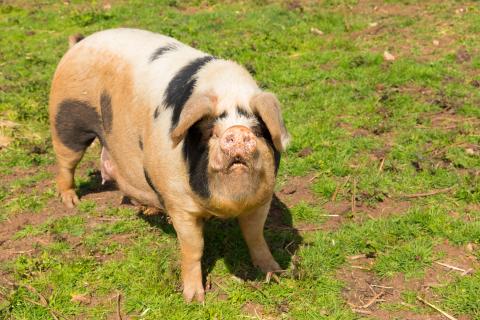The main live hog market in the U.S. is the lean hog market. Slaughter facilities for these hogs are located predominantly in pig-dense regions, and 95% of the animals are moved directly from farm of origin to a slaughter facility. In contrast, cull sows are gathered through a network of local collection points over a vast area of land, then delivered to a number of centrally located slaughter facilities. Trucks for the lean sow market can and often do make multiple stops to get a truckload of same-type sows of similar weights and body conditions. Up to 14% of cull sows are estimated to be subject to 3 or more stops before processing.
While the current cull sow standard is economically more efficient, it raises animal welfare and disease spread concerns. Cull sow mixing can result in clinical deterioration of the sow within 24 hours, leaving the animals fatigued, thin, and lame. More concerning for the entire U.S. swine population is this group’s potential to act as a disease reservoir. Stressed animals from many different locations are mixed together for days before being collected. These populations can and do serve as reservoirs for novel pathogenic disease. Compliance failure for biosecurity is unfortunately common, leading to this population being a potential route of pathogen introduction to the domestic swine industry.
With these issues in mind, a recent study by Dr. Ben Blair and Dr. James Lowe sought to catalogue the movements of various cull sow populations over the course of six months. These data are intended to serve as a model and reference point for potential work in the future. A total of 17,493 premise identification tags (PITs) were collected and data were collected from these tags. The tags represented 1211 premises, 32 states, and 7 federally inspected slaughter facilities.
The study found that some sows did indeed remain in the marketing channel for extended amounts of time, from 3 to up to 40 days (median time from removal to slaughter was 3 days; only 2 individuals traveled 40 days). The median distance between farm of origin and processing was 472 km. 16% of the sows traveled over 1000 km, with a recorded maximum of 2812.8 km. This means that a significant number of sows remain in the network well beyond the incubation period of many important pathogens – including foot-and-mouth disease, African swine fever, and classical swine fever.
The study supports the idea that the U.S. cull sow market has serious potential to transmit disease and act as a disease reservoir. Market hogs expanded U.S. swine disease outbreaks in the past, such as the 2014 porcine epidemic diarrhea virus outbreak. Cull sows are a similar potential reservoir, but the channel is poorly studied and monitored. The authors suggest comprehensive tracking and monitoring of the cull sow marketing channel. Better understanding the channel would allow for better systematic mitigation strategies in the face of a potential novel disease outbreak.
Read the full study here: https://www.aasv.org/shap/issues/v30n2/v30n2p72.html
Blair BW, Lowe JL. A descriptive exploration of animal movements within the United States cull sow marketing network. J Swine Health Prod. 2022;30(2):72-78: https://doi.org/10.54846/jshap/1245
